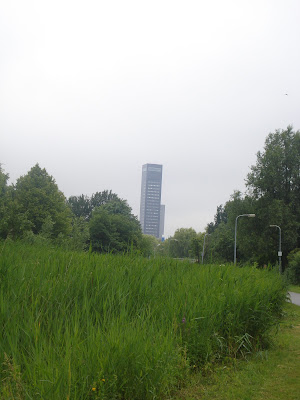A small video will give you an impression of some things which are 'typical' Frisian in the eyes of dutch people. Things like: the Frisian soccer team: Heerenveen, Fierljeppen, Kaatsen, the eleven city skate tour and Frisian bites.
On the background you here the tune of the Frisian Folksong.
Religion
In the landscape of Friesland we already saw a lot of churches. The first thing we've concluded out of this, was that Friesland must be a religious region. The figures show that there's a secularisation going on in the Netherlands. But wat does that mean for Friesland?
 |
| A typically view in Friesland, churchtowers in the landscape |
In Friesland the average of people going to the church lies higher then the rest of the Netherlands.
Since the christinisation of the Netherlands, Friesland always kept going there own way. They wouldn't kneel for a supressor. They 'only kneel for God'. So the christinasation went on but the Frisians killed Bonifatius and kept there own religion but there were influences of christianity in it.
The church has a special place in the Frisian landscape. You can see it at the way they are built on the Terpen. The village was built around the church. It was a place for Frisians to come together.
 |
| Church on a Terp |
An Impression of the Frisian traditions.

























